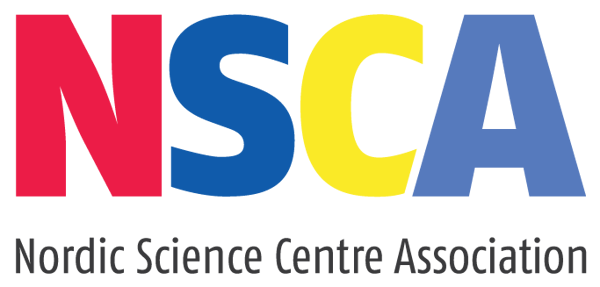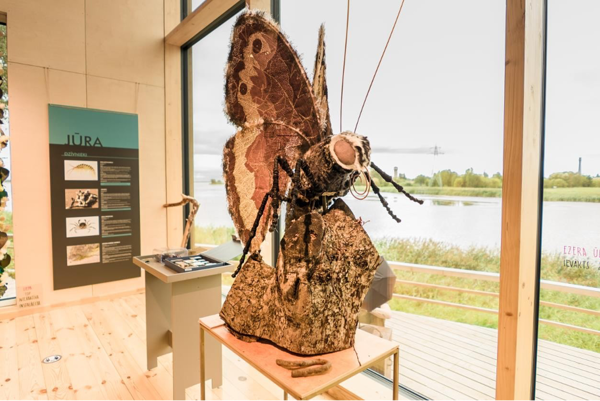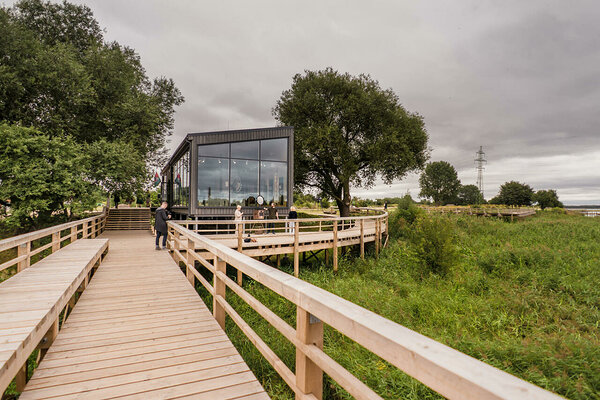by Kristine Pujate - Head of Liepaja Science and Education Innovation Centre
At a time when the pandemic has cut the world in the air, Latvian science centers are actively implementing EEA and Norway Grants 2014 -2021 Program “Research and Education” projects.
Great ideas are being developed in four science centers, in four different cities in Latvia; Liepāja, Ventspils, Cēsis and Daugavpils. Plans are developing, calendars are becoming more and more filled and we are looking to the future with hopeful minds.
Each science center has its own field and specifics.
- Cesis - space
- Daugavpils - business and STEM
- Liepaja - environmental science
- Ventspils -natural sciences and information and communication technologies
Construction works, the creation of expositions, and work on the development of educational programs are actively carried out in the science centers. Projects are supported by partners from local Universities and Norway–Narom Andoya Space Center, Trondheim Science Center, Jærmuseet regional museum, and VilVite-Bergen Science Center.
The construction of Ventspils Science and Innovation Center started in October 2019, but the opening of the centre is planned for the beginning of 2022. The construction of the centre building is progressing rapidly and serious work has already begun on the creation of the content of the Science Centre and the production of interactive and educational exhibits.
Ventspils Science and Innovation Center visitors will have access to seven interactive galleries; Healthy Lifestyle Gallery, Children's Gallery, Smart Technology Gallery, Physics and Mathematics Gallery, Geography and World Gallery, Human and Self-Knowledge Gallery, as well as a simulator area. The exhibits are designed for an educational, interesting, and meaningful experience for the centre visitors of all ages. The exhibits will be linked to 20 different educational programs for STEM, of which 16 will be developed for children and young people, and 4 will be developed to improve the knowledge and competence of teachers to teach STEM subjects to young people.
The total amount of the project “Development of Innovation Centre in Ventspils city” funded by EEA and Norway Grants 2014-2021 Program “Research and Education” is EUR 2,011,676 with the program funding 90% or EUR 1,810,508 (of which 85% Norwegian Financial Mechanism co-financing and 15% state budget co-financing) and municipal co-financing 10% or EUR 201,168.
The project of Liepāja Science and Education Innovation Center is developing at two addresses. Makerspace is being developed in one of the centre's headquarters, where students will be able to develop various projects, thus developing their STEM skills and abilities. In its turn, a "Nature House" has been built on the peninsula, where an exposition is currently being actively developed, which will be dedicated to exhibits and activities in the field of environmental sciences.
As the "Nature House" is located by the lake, a floating platform - a classroom on the lake, will be built next year. By floating, classroom visitors of the science center will be able to explore the natural treasures and the depths of Liepaja lake.
The project “Development of the Innovation Center in the City of Liepaja” is financed by the EEA / N grant program “Research and Education”. Its total costs are EUR 986,049.00, of which EUR 754,327.40 is co-financing from the Norwegian Financial Mechanism, EUR 133,116.60 is co-financing from the Latvian state budget, and EUR 98,605.00 is co-financing from Liepāja City Municipality.
This is a time of creation, but if we think about what we would like to do when the "bad" times are over, then we would like to:
- Welcome groups of students to our science centers;
- Hear countless questions from students and see enthusiasm and interest;
- Hear "When I grow up, I want to become a scientist!";
We could go on and on with this list, but most importantly, when the "bad" times are over (although we are happy to do and work during this time and enjoy it from the bottom of our hearts), we want to enjoy the time of creation together with students, teachers and other visitors and enter a world where STEM (science, technology, engineering, and mathematics) and the environment are becoming exciting.



